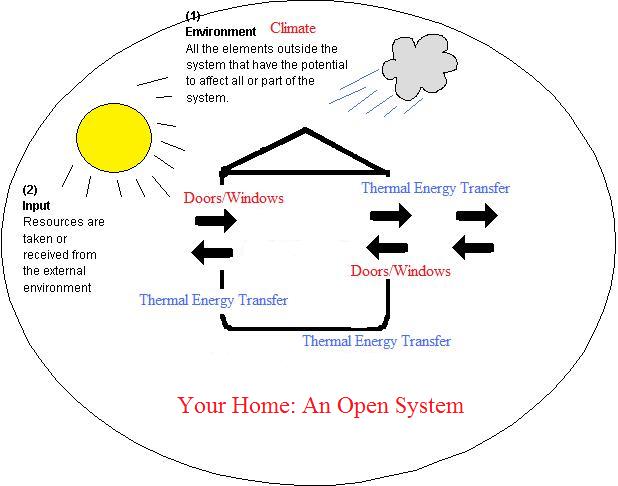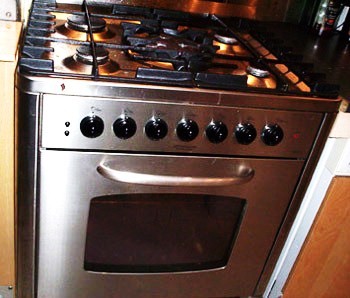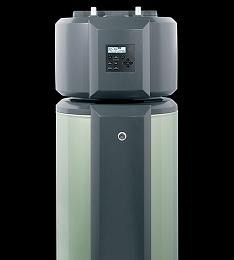When it comes to saving money on heating and cooling costs in the household, the frugal scientist must remember these tenets of Thermodynamics: 1) Heat/Thermal Conduction and 2) Closed Systems vs Open Systems.
Heat conduction or Thermal conduction
Heat conduction is the spontaneous transfer of thermal energy from a region of higher temperature to a region of lower temperature, which acts to equalize temperature differences.
Closed System vs. Open System
An open system is a system in the state of continuous interaction with its environment, allowing energy transfers.NOTE: Systems are rarely ever completely open or closed, but rather open to some and closed to other influences. A closed system is typically used to refer to a theoretical scenario where perfect closure is an assumption. However, in practice no system can be completely closed; there are only varying degrees of closure.
A closed system is a system in the state of being isolated from its surrounding environment.
APPLYING THE SCIENCE TO SAVING
Your home is an Open System. As you come and go, doors and windows open and close. Thermal energy transfer is inevitable. The environment (climate) outside your open system (home) has the potential to affect your open system (home). Indeed, thermal energy transfer (hot and cold) will be taken or received from the external environment until equilibrium is achieved between the two.
When your open system (home) is at a comfortable temperature, keep it closed. Doing so allows you to slow down the process of thermal energy transfer. Keep in mind that in practice no system can be completely closed; there are only varying degrees of closure. You can’t stop thermal energy transfer, so it will get warmer and colder throughout the day, depending on the heat conduction and thermal transfer as it reaches equilibrium, but you can slow thermal energy transfer down, saving on heating and cooling costs.

DOORS AND WINDOWS
Strategically open and close windows, curtains and blinds throughout the day, whether to cool or warm a home.
In the summer, close the windows and blinds before you head to work to
reduce thermal energy transfer. During colder months, open the windows
blinds on warm days to bring in that warmth.
Caulk and seal cracks around windows or doors with weatherproof stripping. Air will escape if there are cracks anywhere in the house. Small cracks may seem inconsequential, but a lot of small cracks could raise your bill quite a lot over time.
Don’t dawdle in the doorway. Whether you’re coming or going, leaving the doorway open for longer than necessary, a thermal energy transfer occurs—allowing all that precious warmth or cool air escape.
Close all doors and vents to all rooms in the home or office that are not being used. That way, you aren't wasting money controlling the temperature of closed rooms.
Keep the oven door closed. A hot oven is a closed space, but when you open the oven door for a peek, it becomes an open space. Following the laws of heat conduction and the transfer of thermal energy, the temperature in the oven will decrease, and the temperature outside the oven will increase. Cut on heating prices by keeping the temperature constant in the oven. Don’t open it. Use the window that is built into most models.

THERMOSTAT CONTROL
Keep the thermostat at a reasonable temperature. Set it 78 degrees. Doing so will prevent your heater or air conditioner from expending too much energy. Also, turn off your heater and air-conditioner during vacations.
Clean your air ducts and replace the filters in your vents. All that dust prevents you from experiencing all that your heater or air conditioner is providing. Taking the time to replace or clean can save you a lot of money. Next time you go into the hardware store, buy a couple filters so you’ll have them on hand when it’s time to replace them. Jot down a note in your day planner reminding you when the filter needs to be changed again.
LIGHTS
Keep the lights turned off during hot days. Lights generate heat and use electricity, so a darker room is, the more likely it is to be cool.
Get in the habit of turning your lights off when you leave a room. All lights generate heat and use electricity, so turn them off, especially during hot summer days. For the really forgetful, consider installing motion sensitive lighting devices.
THERMO-PIMP YOUR HOME
Insulation is everything. If you have the opportunity to build your own home, an investment in quality insulation will seriously impact your heating and cooling costs for years and years to come. Insulate your walls, basements and floors with industry standard materials. Anything less may not prevent heat and cold damage which may potentially cause warping, dry rot and mold.

Outfit your home with double-glazed windows. Double glazed windows are two panes of window glass sandwiched together to create a middle buffer. This buffer can contain either "dead air" or a special gas such as argon. (Argon is a better buffer zone than air because it better inhibits passage of heat or cold into the house.) Double panes of glass and the buffer zone provides a better barrier against outside temperatures. Initially created for extreme climates, window manufacturers are now producing double glazed windows for nearly any location.
Keep an eye out for innovative cost-saving appliances. For example, recently GE unveiled its Hybrid Electric Water Heater that cuts energy use in half. It requires only about half the energy to produce the same hot water homeowners are accustomed to. Based on the same size standard tank water heater which uses approximately 4800 kWh per year, the GE Hybrid is designed to use about 2300kWh, about half—which should save about $250 a year, or $2500 over ten years.

Controlling the inside of your open system isn’t the only way to cut down on heating and cooling costs. By altering your outside environment, thermal energy transfer can also be prevented.
Plant trees. Tree leaves protect your home from sunlight heating and can cut cooling costs considerably during warmer months. Plus, tree trunks and limbs serve as a windbreaker, which help to reduce wind chill. The east and west sides of your home need the most shade because of the path of the sun. Also, keep the south side of your home clear of trees so that winter sun can warm your home during cooler months.
YOUR BODY
Your body is an open system and the environment outside your body influences it with thermal energy transfers. Apply all the same practices you used on your home, an open system, to your body. For example, insulate.
During colder months, don a sweater when you think you can survive without cranking up the heater. Swap your light cotton sheets for a heavier flannel. Wearing your hair down, if it’s long, insulates your neck, and slows thermal energy heat loss there, just like a scarf. Also, cuddling up to someone else’s 98.6 degrees is a thermal energy transfer you can truly appreciate on a cold night!
During warmer months, do the opposite. Sport a tank top and shorts on warm days. Dress your bed with light weight sheets that help your skin breathe while you sleep. Putting your hair up or shaving can keep you cooler. As for cuddling up to someone else’s 98.6 degrees, that’s when cranking up the air conditioning is definitely worth the extra buck.



Comments